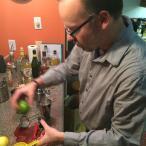-
Welcome to the eG Forums, a service of the eGullet Society for Culinary Arts & Letters. The Society is a 501(c)3 not-for-profit organization dedicated to the advancement of the culinary arts. These advertising-free forums are provided free of charge through donations from Society members. Anyone may read the forums, but to post you must create a free account.
Over mixing
-
Similar Content
-
- 8 replies
- 2,236 views
-
- 124 replies
- 23,601 views
-
- 0 replies
- 272 views
-
- 56 replies
- 3,365 views
-
- 43 replies
- 2,484 views
-
-
Recently Browsing 0 members
- No registered users viewing this page.




Recommended Posts